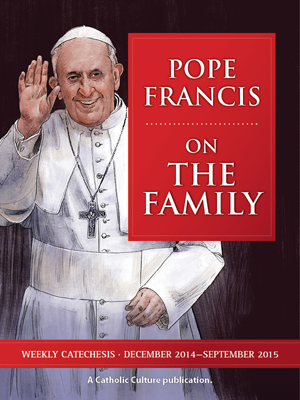The Right “Measurables”: Judging the Effectiveness of Bishops
By Peter Mirus ( bio - articles - email ) | Feb 23, 2012
Update: answers to the question posed in this article are now available here: Grading Bishops.
In my work (business and marketing strategy) we talk a lot about the right “measurables". What data should we collect and review that will show us how things are going, and make course corrections as necessary?
As concerned Catholics, we want to know the state of our bishops, both individually and collectively. Who are the “best” bishops? Who are the “worst”? By what measurable criteria are we evaluating their performance?
So this is the question that I pose to you, the reader, and to my colleagues at CatholicCulture.org: what are the measurables by which we should judge the “effectiveness" of a bishop? Responses will be used to update this article. Thanks!
All comments are moderated. To lighten our editing burden, only current donors are allowed to Sound Off. If you are a current donor, log in to see the comment form; otherwise please support our work, and Sound Off!
-
Posted by: -
Feb. 25, 2012 10:14 AM ET USA
Here's another: a proportion comparing two figures: the # of priests working in the Bishop's chancery and the # of priests working in diocesan parishes. My own look at Catholic statistics show that many chanceries are heavily staffed with priests while some parishes in the diocese go without one. This is an increase in bureaucratic overhead - more priests pushing paper than ministering to the flock.
-
Posted by: Defender -
Feb. 24, 2012 1:50 PM ET USA
More...Does he tell his priests NOT to empty the holy water fonts during Lent (every year a pastor has the single, HUGH water font "cleaned" at this time of year, which just happens to last 40 days)? Does he refuse to give Communion to those who kneel to receive? Does he allow Jesus to be hidden in a far off tabernacle somewhere in the Protestant-looking church? Has he done nothing for those who are out of work in his diocese? Has he bought a new house for himself in a gated community? More?
-
Posted by: Defender -
Feb. 23, 2012 5:34 PM ET USA
Let's see: How many complaints there are about his priests? How many (and what types) of mistakes does the bishop make that the press finds out about? How responsive is his diocese to complaints, etc? How many schools are still open in the inner city an what is the tuition? How strong are the CCD and RCIA programs? Does he and his priests know the sins that cry to heaven for vengeance (ask, you'll be surprised) and why God created us (you'll be surprised again). Is the Latin mass available? More
-
Posted by: -
Feb. 23, 2012 3:44 PM ET USA
Many readers will probably respond with this answer: number of vocations in a diocese is the best single measure of episcopal quality.
-
Posted by: Saint Jimbob of the Apokalypse -
Feb. 23, 2012 3:24 PM ET USA
Measuring church membership vs. overall population might be a start, but that could only mean that the bishop in question is not making anyone uncomfortable. Vocations vs. church members vs. population might be a good stat. A good bishop inspires good priests which inspire more vocations. Perhaps also a useful metric might be the number of negative columns and stories printed in the National Catholic Reporter. You can tell a good bishop by some of the feathers he ruffles..
-
Posted by: AgnesDay -
Feb. 23, 2012 2:37 PM ET USA
Besides the number of new vocations and ordinations each year, I suggest that Average Percentage of Parish Growth Index (APPGI) also be added. The number of apostolic visitations made per year is another. A sample poll in which randomly selected lay persons can pick out his photo is yet another. How about the number of marriage annulments issued per year in ratio to the population (smaller is better)?





 Peter Mirus is a business, marketing, and technology consultant with more than 20 years of experience working with companies and nonprofits, ranging from start-ups to large international organizations. From 2004-2014 he contributed articles on the Catholic Faith, culture, and business to the CatholicCulture.org website.
Peter Mirus is a business, marketing, and technology consultant with more than 20 years of experience working with companies and nonprofits, ranging from start-ups to large international organizations. From 2004-2014 he contributed articles on the Catholic Faith, culture, and business to the CatholicCulture.org website.



